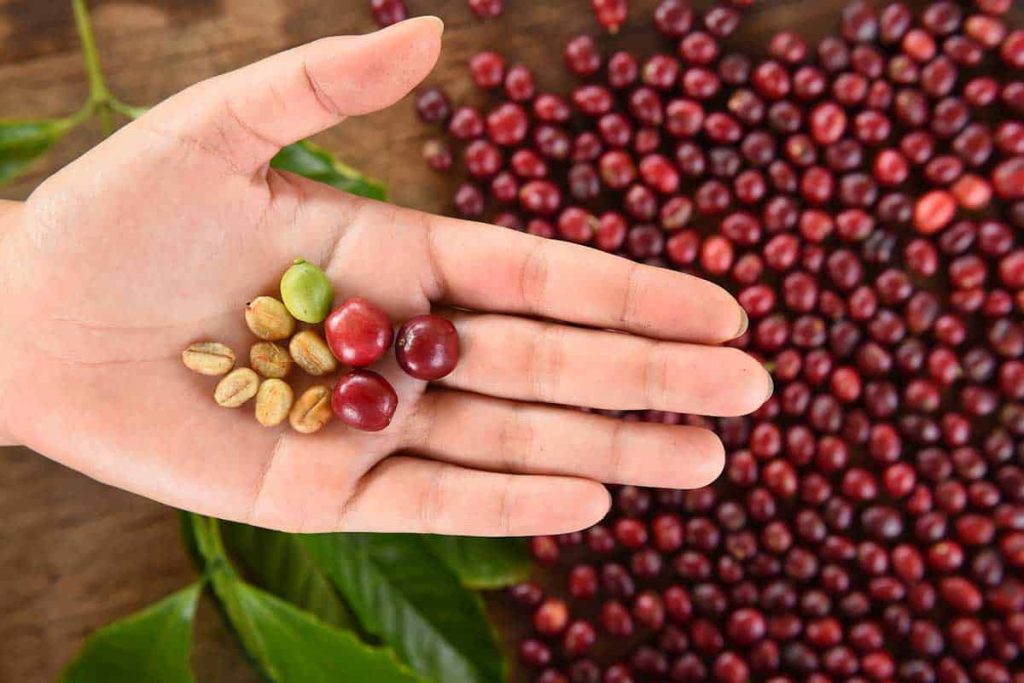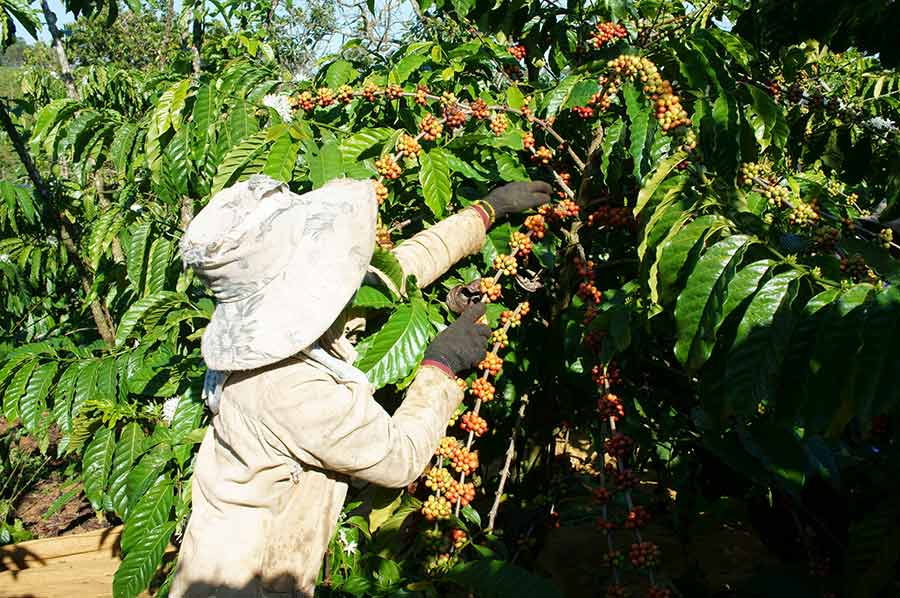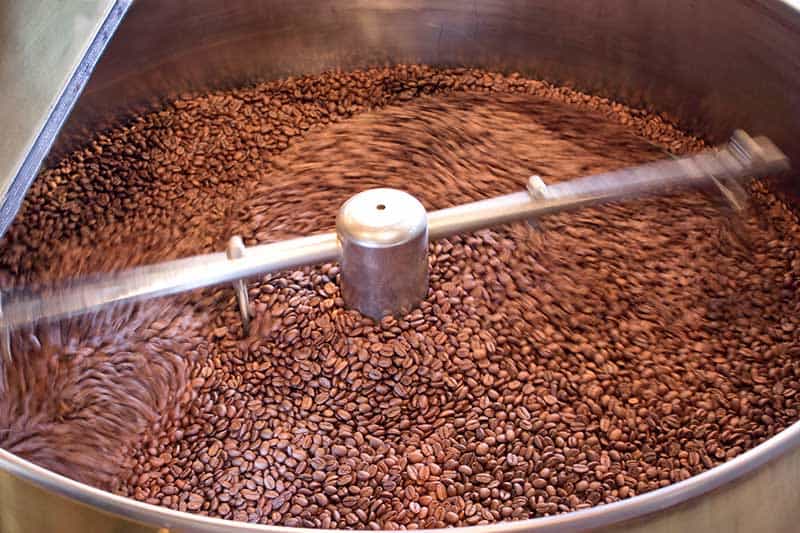How Are Coffee Beans Made: The Process of Creation

Coffee is undoubtedly one of the most popular beverages worldwide. So many people drink coffee or have at least tried it at some point in their life. But how many of us know how coffee beans are made and what they go through before they are ready for brewing?
It takes a lot of expertise to create coffee that tastes and smells great. In this primer, I will tell you the entire process of coffee growing, from the moment you plant the seeds to the moment you purchase the coffee from a store and take it home. You will learn why some branded coffees are so expensive but completely worth it and why the taste of coffee is not always the same within a brand and between different brands.
If you are still looking for your signature coffee taste, look into a company that practices sustainable, responsible growth and Fair Trade work and packages the coffee into eco-friendly packaging. All of this will help you drink your coffee in peace and with a clear conscience.
So if you are up for the task of learning how coffee beans are made from beginning to end, keep on reading. I bet that after reading all about the process, you will have a newfound appreciation for this drink that we all love yet take for granted!
How Are Coffee Beans Made? The Farming Process
The way that coffee beans are made is a rather long and time-consuming process, and it also requires quite a lot of human work and some machine work. To make it more understandable, I have decided to divide the process into several sections that I will discuss in greater detail. So let’s get started with the process and see what it is all about!
Planting
Coffee comes from a plant, usually either Arabica or Robusta, or Typica.
The first step of growing these plants is to plant coffee seeds. Usually, these seeds are planted during the rainy season in large beds that get enough shade at all times. The soil needs to be rich in minerals, and a steady temperature throughout the day is also required for growing high-quality coffee beans.
Some coffee beans require a certain elevation to grow. Typica varieties, for example, produce better-tasting beans when grown in highlands, so that is something that should be taken into consideration as well.
The seeds planted will grow into sprouts and then seedlings. Once they are nicely formed, they are moved into individual pots. This will make it easier to control the soil, fertilize it, and water it.
Harvesting
Once the coffee seeds are planted, the first coffee cherries are expected in approximately three to four years. This might seem like a long time, but it is worth it because once you have the trees, you will get new coffee cherries every year.

The coffee cherries should have a bright or dark red color when they are ready for harvest. Harvesting can be done by hand or with the help of a machine. However, it is better to hand-pick them so that only the ripe ones are picked and the rest left to ripen.
The harvesting process is very time-consuming. Depending on the number of people that are picking and the number of coffee trees you have, you can expect the process to take a couple of weeks. There is generally one harvest season – North of the Equator, the harvest is anywhere from September to March, while South of the Equator, ripe coffee cherries are harvested from April to August.
How Is Coffee Made? Post Harvest Processing
Once coffee cherries are harvested, it is time for processing. This includes sorting, selecting, pulling, fermenting, and drying.
Sorting and Selecting
The sorting and selecting process is very important for machine-harvested cherries. The sorting includes going through the cherries and removing the stones or other debris. Then the batch moves on to selection which includes removing the unripe cherries and leaving them behind for the time being.
Pulling
The batch of ripe coffee cherries will then go through the pulling process which includes removing the skin of the cherries. What gets pulled out are the coffee beans which at this time are quite pale and do not look like the regular coffee beans you are used to seeing.
Fermenting
Following the pulling process, you have the fermenting process. The reason why coffee beans are fermented is to remove a layer called the mucilage layer. This process lowers the water content of that bean, meaning that the final product will have a more complex, deep taste.
Drying
The final step of processing is drying the coffee beans. They are left to dry until their moisture level is between 9% and 13%. The dry beans at the end of this process are known as parchment coffee.
Sorting and Storing
This stage is skipped if the beans are to be milled right away. This process of sorting and storing refers to sorting through different types of beans and storing them for months or even years. For beans stored for some time, they should have enough humidity and a steady temperature that will suit them.
Milling
The parchment coffee consists of dry beans that need to be hulled. If you do not know what this means, let me explain: The process of hulling includes removing the dry layer from the bean. That layer is essentially the coffee husk or coffee pulp.
Once that layer is removed, the coffee beans go through the process of polishing. With polishing, all of the unneeded skins and layers from the bean are removed. Not everyone likes to polish their beans, but polished beans are largely seen as higher quality, so generally, coffee producers do go ahead and do it.
Grading and Tasting
In the grading of coffee beans, the beans are sorted depending on their size and weight. This is the producer’s last chance to check if all the beans are good, meaning that if there are any unripe or faulty beans, they can remove them. If some beans have flaws or a weird color, they can also be left out.
At the end of the grading process, all that should be left are the best beans for that harvest season. These are the beans sent to companies to taste and eventually turn into beverages, so make sure that you check them well before you ship them away.
When coffee beans reach the coffee company, a coffee connoisseur comes to taste the beans. They will check the acidity levels in the beans, as well as the taste notes and aftertaste. If they like the taste, they will accept the beans and ask for them to be sent to the company’s facilities.
Distribution
When a company like Atlas or Nestle orders the beans from the producers, shipment to the facility is arranged so they can be roasted.
Roasting
During the roasting process, beans turn from green into light, medium, or dark brown beans. Roasting is very important because it turns the beans into ones that are ready to brew – the ones that you and I get to purchase from the store.

There are different types of roasts and they should be done by someone who is experienced in roasting coffee beans. You can also roast coffee beans at home but will need at least some knowledge about the process to be able to achieve the desired results. So back to the roasts:
- Light roast – coffee beans without any oil on the surface; the color is usually light brown
- Medium roast – coffee beans that are roasted until the first crack; the color is usually medium-light to medium-dark brown
- Dark roast – coffee beans with an oily surface and dark brown color that can seem black at times; you should roast the beans until the second crack to truly get the dark roast
Depending on the specific shop you go to, you can either buy beans that are already roasted or you can ask the shop to roast them in front of you.
Packaging
The roasted coffee is then packed in bags — either as whole beans or grounds. Either way, they are packed in air-tight bags or pouches to preserve the flavor as much as possible.
When purchasing coffee, I recommend you go for one that has packaging that can be resealed as needed. This will help you make your coffee last longer and even taste better.
Grinding
As for the grinding of the beans, I do not recommend doing it before you brew your coffee. It is said that ground coffee goes stale a lot faster than whole bean coffee, so that is something to think about.
You can purchase whole coffee beans that you grind at home when you need to. I suggest grinding them just before you make your coffee – this will help you preserve the fresh taste and aroma to the fullest.
You can refer to our grinding guide here.
Brewing
There are many ways to brew coffee – the drip method, espresso, cold brew, French press, pour-over, Moka pot, and so on. Some producers recommend specific brew methods for specific beans, so do take that into consideration.
Check our brewing guides here.
FAQs on the Coffee Beans Process
As you have seen thus far, it takes quite a lot of work to get from planting your coffee seeds to drinking a cup of coffee made from those seeds. However, the process is worth it, and you will surely enjoy the coffee you grow yourself more than any other. Here is another piece of information on this topic that I think you will find interesting:
Can I grow a coffee tree?
Even though coffee trees need certain conditions to grow, you can try to grow one yourself. These trees can be grown both indoors and outdoors. If you pay enough attention to the tree and give it good growing conditions, you will find it thriving in no time!
That’s Quite a Journey from Soil to Cup!
I bet you had no idea it took so many things and such a long time for coffee beans to reach your home. I hope that after reading this guide on the process of making coffee beans, you will come to appreciate this beverage that much more!
Let me know in the comments if you found this guide inspirational or if you know anything about the process that I forgot to mention. I would love to read all about it!
Owen is a writer and editor at Caffe Streets who considers himself a coffee fanatic. He spends his time researching and testing different coffee beans and brewing methods and sharing what he learns with others.





